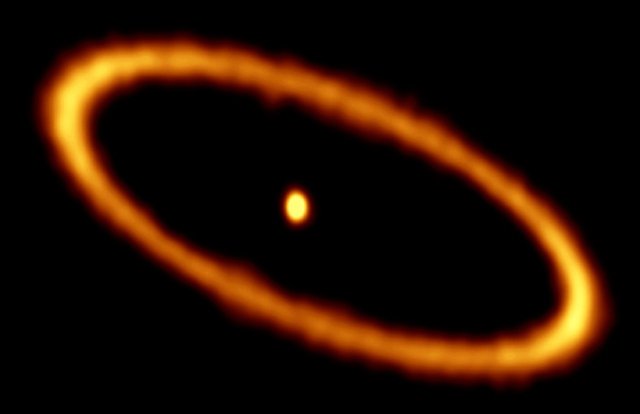Fomalhaut is one of the brightest stars in our sky, located just 25 light-years from Earth in the constellation of South Pisces (Piscis Austrinus). In this image, obtained with the ALMA (Atacama Large Millimeter / submillimeter Array) telescope, Fomalhaut (center) is surrounded by a dust ring. This image was first obtained with such a high resolution and sensitivity at millimeter wavelengths.
The disk around Fomalhaut consists of a mixture of cosmic dust and gas. The starting material for it was a dense cloud of exocetes around Fomalhaut, in which comets collapsed in mutual collisions and in approaching the mother star. This turbulent environment is similar to the one that existed around the Sun four billion years ago, in the early stages of the formation of the solar system, in the era of the so-called "late heavy bombardment" (Late Heavy Bombardment). Then a huge number of stony objects filled the inner region of the solar system. They encountered the young planets of the terrestrial group, including the Earth itself, as a result of which many impact craters appeared on the surface of these planets, and today are visible, for example, on Mercury and Mars.
There are several fragmentation disks in Fomalhaut; The one that is on this picture ALMA - the most external. It is located about 20 billion kilometers from the parent star, and its width is about 2 billion kilometers. Such a relatively narrow eccentric disk could be formed only under the influence of the gravity of the planets of the Fomalhaut system - similar to how the gravitational effect of Jupiter influenced the formation of the asteroid belt in the solar system. In 2008, the famous Hubble Space Telescope NASB / ESA (Hubble Space Telescope) discovered the famous exoplanet Fomalhaut b, the orbit of which lies inside this ring, although the planet itself is not visible in this ALMA image.
